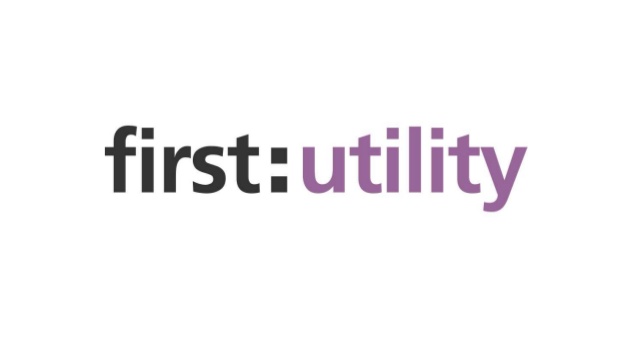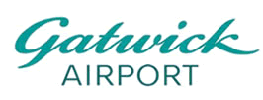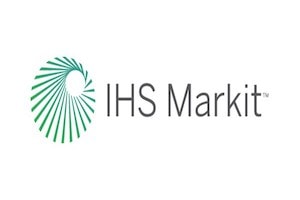You Ask, We Answer: Drupal Problems
When evaluating any platform for your enterprise, it's natural to prioritize what could go wrong. In fact, when people make purchasing decisions, they often **worry more about potential pitfalls than positive outcomes**, and they actively search for "negative" reviews or "problems" associated with products or services. At Sirius, we believe in absolute transparency and a teaching mentality. That's why we're directly addressing the common concerns and "elephants in the room" that enterprises face when considering or working with Drupal. Our goal is to provide you with honest answers, building the trust necessary for informed decision-making.
While Drupal is a powerful choice for complex digital platforms due to its customizability, scalability, and security, its inherent flexibility can introduce significant complexities. These complexities are often the source of challenges that can impact your Total Cost of Ownership (TCO) and strategic objectives.
Let's explore the key problems enterprises encounter with Drupal:
1. The Steep Learning Curve and Talent Dependency
One of the most frequently cited challenges with Drupal is its **steep learning curve**. This isn't just about general web development; it delves into "Drupalisms"—unique terms, methodologies, and architectural patterns embedded within its extensive API documentation. For developers accustomed to other CMS or general PHP, simply knowing PHP isn't enough; they need to **re-frame their existing knowledge** within Drupal's specific logic, which is both time-consuming and costly.
Documentation and Support Limitations: While documentation is comprehensive, it's often not tailored for beginners, making self-learning difficult. Finding timely support for highly specialized or legacy module issues, especially in community forums, can be slow, increasing troubleshooting time. This means that while Drupal benefits from a large community, **niche enterprise problems may require custom solutions or paid commercial support**, adding to the TCO.
Challenges in Talent Acquisition and Retention: The specialized nature of Drupal development means leveraging its full potential requires high proficiency or access to specific expertise. **Bringing new developers into the ecosystem demands substantial investment in time and financial resources for training**, extending onboarding periods and impacting productivity. The demand for these niche skills makes talent acquisition competitive and costly, particularly for senior roles, leading to a smaller talent pool, higher recruitment expenditures, and reliance on more expensive external agencies.
Reliance on External Agencies and Vendor Lock-in: Due to Drupal's complexity, enterprises often become **heavily dependent on external developers or agencies** for initial setup and ongoing maintenance. This dependency, while providing immediate expertise, poses a significant strategic risk. If pricing changes or knowledge transfer is poor, an enterprise can become **highly vulnerable and locked into an external provider**, stifling internal innovation and incurring additional costs or delays. Proactive strategies like robust internal training and stringent documentation from vendors are essential to mitigate this risk.
2. Implementation Complexities and Technical Debt Accumulation
While Drupal is Open Source and has no direct licensing fees, the **initial development and customization for enterprise-level implementations can be significantly more time-consuming and expensive**. This is especially true for large-scale sites requiring custom workflows, extensive database management, and complex integrations with critical business systems like ERP, CRM, and marketing automation tools.
High Costs and Underestimation of TCO: Enterprise Drupal projects typically start from $75,000 and can easily exceed $200,000, with highly complex initiatives reaching up to $1,000,000. **Custom component development, like advanced themes and intricate modules, can add tens of thousands of dollars to the budget**. Enterprises often underestimate the true Total Cost of Ownership by focusing solely on the absence of licensing fees, leading to budget overruns and dissatisfaction.
Environment Inconsistencies and Configuration Management Pitfalls: A frequent challenge is **inconsistent configurations across development, staging, and production environments**, leading to unexpected bugs. **Configuration drift**, where production settings diverge from version control due to manual changes, can result in missing features or broken settings after deployments. Manual configuration management is error-prone and time-consuming, undermining modern DevOps and CI/CD principles. Every deployment becomes a high-risk event, consuming valuable developer resources and hindering rapid iteration.
Risks from Poorly Implemented Custom Code and Unmaintained Modules: This is a major source of issues, introducing **increased security vulnerabilities, site instability, and conflicts during updates**. Custom code that doesn't adhere to Drupal's standards or lacks proper error handling and input validation can bypass built-in security. While Drupal has a vast community, the quality of contributed modules varies, and relying on unmaintained ones introduces substantial risks. **Technical debt accumulates when these issues are ignored**, potentially necessitating a costly platform rebuild. This debt is a strategic business risk, increasing future maintenance costs and slowing innovation.
3. Performance Bottlenecks and Resource Intensity
Drupal can be a significant resource consumer, and **without proper optimization, it may suffer from slow load times**, negatively impacting user experience, bounce rates, and search engine rankings.
Causes of Slow Page Load Times: Common culprits include:
- Unoptimized Images and Media: Large, uncompressed images, lack of responsive image implementation, and missing lazy loading increase page weight.
- Excessive or Uncombined CSS and JavaScript Files: Numerous uncombined files increase HTTP requests, and lack of aggregation/minification delays rendering.
- Inefficient Database Queries: Redundant tables, unindexed tables, unused entries, and poorly written custom queries generate heavy database load.
- Insufficient or Improper Caching: Disabled or misconfigured caching, or the absence of CDN/reverse proxy integration, leads to unnecessary database queries and slow loads.
- Overloaded Themes: Themes with excessive fonts, icons, or assets, or too many regions/blocks, can introduce significant rendering overhead.
Suboptimal Server and PHP Configurations: Outdated PHP versions, insufficient memory limits, improper OPcache settings, and the absence of server-level caching (e.g., Varnish, Memcached, Redis) severely impede performance. Poor database server tuning also contributes to degradation.
Scalability Challenges for High-Traffic and Multi-Site Environments: Ensuring a Drupal site handles high traffic and scales effectively requires **significant architectural and operational effort**. Traditional deployments on self-managed infrastructure necessitate manual provisioning, complex load balancer setups, CDN configuration, and meticulous database optimization. This reactive scaling is error-prone and can lead to costly downtime. Multisite setups can introduce unique performance challenges as all sites share underlying server resources. **Scalability must be a core architectural consideration from the planning stages**, with upfront investment in scalable infrastructure, robust caching, and potentially cloud-native platforms. **Failure to plan leads to expensive re-architectures, degraded user experience, and missed business opportunities**. Performance is a business-critical metric; even a 100ms latency increase can lead to a 1% loss in sales.
4. Security Vulnerabilities and Compliance Risks
Running outdated Drupal core and contributed modules is the primary security risk, exposing platforms to known vulnerabilities like SQL injection, XSS, CSRF, and privilege escalation.
Drupal 7 End-of-Life (EOL): Effective January 5, 2025, Drupal 7's EOL is an **"existential threat"** for enterprises still using it. Sites will no longer receive official security or compatibility updates, making them highly vulnerable to cybercriminals who target legacy systems.
Non-Compliance and Financial Penalties: Failure to address Drupal 7 EOL can lead to severe non-compliance with regulations like **FedRAMP, PCI, HIPAA, and SOC 2**, incurring massive financial penalties and significant reputational damage. The average cost of a data breach exceeds $4.45 million, and regulatory violations can result in fines up to 4% of global annual revenue or millions of dollars. This situation necessitates a strategic decision for migration or extended security support.
Common Attack Vectors and Misconfigurations: Drupal sites face threats from:
- Cross-Site Scripting (XSS): Improper input sanitization, unsafe tokens, or unfiltered HTML input allow malicious script injection.
- SQL Injection: Custom modules constructing raw SQL queries without proper parameterization enable attackers to manipulate databases and access sensitive information.
- Cross-Site Request Forgery (CSRF): Attackers trick authenticated users into performing unintended actions.
- Authentication Bypass: Gaining unauthorized access by circumventing login mechanisms.
- Weak Authentication and Permissions: Poorly configured roles, overly permissive roles, default admin usernames, weak password enforcement, and lack of 2FA create easy entry points.
- Inconsistent HTTPS Configuration: HTTP versions of pages, mixed content warnings, expired certificates, and lack of HSTS headers undermine encryption and trust.
- Improper File Upload Handling: Uploading executable files, lack of validation, insufficient permissions, or missing virus scanning can create vulnerabilities.
Proactive Security Mindset: While Drupal has a dedicated security team and built-in protections, **vulnerabilities primarily arise from improper implementation, outdated components, and misconfigurations**. Enterprises cannot rely solely on Drupal's reputation; a proactive, "security-first" mindset and continuous vigilance are essential. Security is an ongoing process integrated throughout the development and operations lifecycle (DevSecOps), requiring automated checks, regular audits, and continuous monitoring.
Conclusion
Successfully implementing and sustaining Drupal for enterprise use requires **acknowledging and proactively managing these multifaceted challenges**. The "power and flexibility" that make Drupal attractive are also the source of its complexities. Enterprises must move beyond the misconception of "free" Open Source software and recognize the **substantial, ongoing investments required in specialized talent, robust development practices, continuous performance optimization, and a proactive security posture**.
By honestly addressing these potential problems—the very "elephants in the room" that prospects worry about—we aim to **build trust and provide you with the comprehensive understanding needed to make informed strategic decisions** about your Drupal adoption.
















































